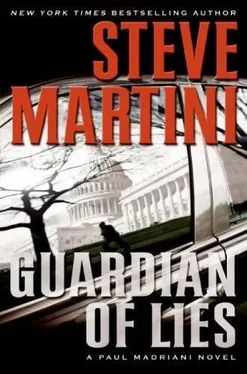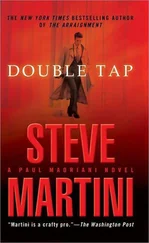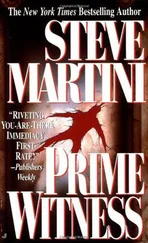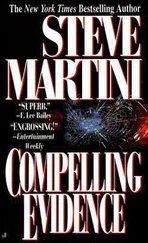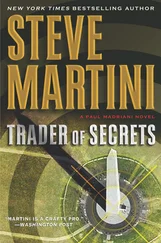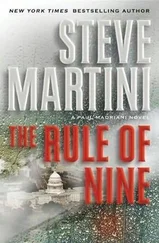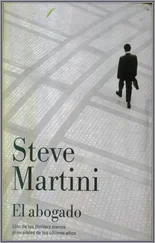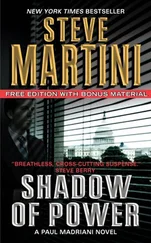Now that Honeycutt was in the lab, he could see the images that Pike had sent him on the oversize high-definition screen, the figures enlarged to almost half their actual size.
In all, there were seven separate digital images, six original exposures that had been shot on the same date four months ago. The only exception was the attempted enlargement, the image that was so badly mangled by poor focus, resolution, and glare that it was worthless. From the digital data he couldn’t be certain when the enlargement was originally made, but it had last been opened and edited two days prior to Pike’s e-mail. That was probably when Pike realized it wasn’t going to get any better, gave up, and sent it in to be professionally processed.
Honeycutt knew from Pike’s e-mail that the attempted enlargement was something in the background of one of the other pictures. What he didn’t know was which one. Take his pick. There were six.
Pike probably assumed that the lab would work off his own failed enlargement, cleaning it up.
Honeycutt wanted to work from the original rather than Pike’s degraded copy so that he could use the lab’s software to render the enhancements and get the best image possible.
Worse, Pike’s enlargement failed to copy sufficient file data from the original shot so that the original could be easily identified.
To Honeycutt, Pike’s enlargement was nothing but a white fuzzy blur with a few dark lines on it. With nothing else to orient him, finding the original picture and then locating the tiny speck in the background that represented Pike’s target took the better part of an hour. It was like finding a single piece to a jigsaw puzzle in one of six different puzzle boxes.
He looked for color, the shade of white in the enlargement, and then tried to imagine how small it might be in the original digital frame.
There was a piece of white cloth on a flat boulder off to one side in one of the pictures. Not it.
One of the men was holding a sheet of paper. He appeared in four of the shots, holding the paper in a different position with differing shadows and shades of light in each one. Honeycutt was able to eliminate two of them just by looking, and then used the magnification of the software to eliminate the other two.
When he finally found what he was looking for, Honeycutt suddenly realized what was happening in the pictures, the arm gestures and all the frenetic movement. The item in question provided the missing context for the photographs because the old man kept pointing at it. Only the stop-action of the camera’s shutter kept his outstretched finger from getting there.
The men in the pictures weren’t just talking, they were arguing. If Honeycutt had to guess, what they were arguing about had to do with the square white speck in the distance, the one on the table behind them, near the house. It was this document that Pike was trying to read.
Honeycutt went to work quickly. Resolution and glare reduction were easy. Computerized algorithms had to be applied to provide proper focus. The camera’s auto focus had seized on the moving figures in the foreground, so the item in the distant background was beyond the focal point of the camera’s lens. The digital software effectively re-created the enlarged image of the document by using computerized numerical probabilities and refocused the enhanced image. The sharp edges of paper came into clear view.
Honeycutt could now see more than a single page, a stack of pages, maybe ten, maybe twenty, he couldn’t tell. They were large sheets if the size of the table was any measure. The pages covered the width of the table from one side to the other; he guessed maybe three feet top to bottom and not quite as wide. The white speck looked much smaller in the original photograph because of the oblique angle from which it had been photographed, with the paper lying flat on the table.
Enhanced and enlarged on the big screen he could see that the pages were bound together, with what looked like tape all along the far edge at the top. But the angle made it impossible to make out details on the page, only a mirage of lines and curves, as if their shadow seemed to float just off the surface of the paper. There was some kind of detailed drawing on the top page. That was clear.
Using the software it was possible to attempt to re-create the image from a less oblique, even perpendicular angle, as if the item had levitated up off the table to face the camera. The problem was that the accuracy and reliability of such a computer-generated “veritable” photograph, given the distance involved in the original shot, was sketchy at best. The algorithms of the software could reproduce the Mona Lisa , but they needed at least a minimal amount of basic information from the original before they could do it. Honeycutt could be left with large pixilated blanks if the data was not sufficient in the original image for the magic of the algorithms to fill in the missing information. But he had gone too far to quit now. He checked his watch. It was after eight o’clock.
It took him forty minutes and three separate attempts tweaking and adjusting the parameters of the program before he was able to come up with something that even looked as if it might work. It came back not as an image, but as a list of numbers several pages in length on the screen. Honeycutt sent the coded instructions to the wide-format printer in the other room. He then leaned back in the chair, took off his glasses, and rubbed his eyes. He was getting hungry, it was late, time to go home.
It took nearly a minute before the printer’s motor kicked on in the other room.
Honeycutt got up out of the chair, sauntered across the hall, and turned on the light just in time to catch the point of the needle-sharp stiletto full force in the center of his stomach, two inches beneath the hard bone of his sternum. The eight-inch blade sliced through the diaphragm, its pointed tip penetrating well into the lower chamber of his heart.
Liquida held him for no more than four or five seconds before Honeycutt’s knees buckled and his body collapsed onto the heavy-mill plastic of the drop cloth. Orville tried to stay on his knees, holding his stomach, but Liquida toppled him with his foot into the fetal position.
“I thought you were never going to get around to printing that. Thought I might have to chase you down.” Liquida talked to him as he moved to the other side, picking up two of the corners of the drop cloth and getting ready to close it up like a bag.
Honeycutt’s eyelids flickered. He lay there, his pupils following his killer as Liquida moved around him. Blood spurted from the wound in his stomach in a pulsing arc, out onto the plastic. Honeycutt tried to stop it with his hands but he couldn’t. It continued for thirty seconds, maybe less, as Liquida moved around adjusting the plastic as needed to contain the blood. In a single sputtering pulse it stopped. When he looked at Orville’s eyes, they were glazed, the lids half shut.
Liquida had arrived at three that afternoon. He went immediately to the front desk at Herrington Labs with an envelope addressed to “Orville Honeycutt,” the name given to him by the people who employed him in Colombia. Apparently, they had gotten it from an e-mail they received on Emerson Pike’s computer. The envelope to Honeycutt was marked URGENT-PERSONAL AND CONFIDENTIAL. Inside was a blank piece of paper. Liquida then went out to his rented car in the parking lot and with a pair of field glasses he watched through the windows as Honeycutt was called and came out to the front of the office to retrieve the envelope. He got a good look at him, and another a couple of minutes later when he came back and angrily confronted the receptionist, who pointed to the door and shrugged her shoulders.
Читать дальше
